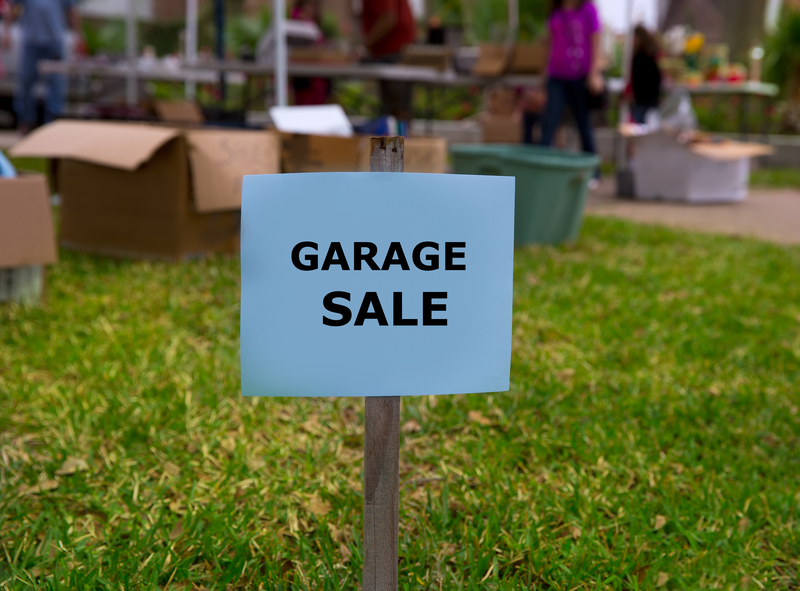Unveiling Mini Skips: What Are They?
Waste management has evolved dramatically over the years, and one innovation that has made both domestic and commercial rubbish removal easier, faster, and more sustainable is the mini skip. But what are mini skips, and why are they becoming increasingly popular across the waste disposal industry? In this comprehensive article, we will dive deep into the world of mini skips--covering their definition, sizes, usage, benefits, and how to choose the right provider.
What is a Mini Skip?
Mini skips are small-sized waste containers commonly used for disposing of household, garden, and light construction waste. Their compact size makes them an excellent choice for residential projects and situations where space is limited. Unlike their larger counterparts--such as midi skips or builders skips--mini skips are specifically designed for smaller loads and can be placed conveniently in driveways, gardens, or even on public roads with the right permit.
Various Definitions of Mini Skips
- A compact waste container for light or moderate rubbish removal
- Skips with volumes typically ranging from 2 to 4 cubic yards
- Waste management solutions ideal for household clear-outs, small renovations, and garden clean-ups
In essence, the main feature that defines a mini skip is its scaled-down size and suitability for small to medium-scale waste projects.

Mini Skip Sizes and Dimensions
Mini skips are categorized based on their storage volume, usually measured in cubic yards or litres. Here's an overview of common mini skip sizes and their typical dimensions:
- 2-yard mini skip: Holds about 20-30 bin bags of waste (approx. 1.5m long x 1.0m wide x 0.75m high).
- 3-yard mini skip: Accepts roughly 30-40 bin bags (approx. 2.0m long x 1.2m wide x 0.76m high).
- 4-yard mini skip: Fits up to 40-45 bin bags (approx. 2.1m long x 1.5m wide x 0.97m high).
It's important to check with your skip hire service for the exact dimensions, as these can vary slightly based on provider and region.
Where Are Mini Skips Used?
Mini skips are chosen for a variety of waste disposal tasks. Here's where you might find them being used:
- Home improvements: Bathroom or kitchen remodels, minor renovations, or DIY projects
- Garden waste removal: Disposing of soil, branches, grass cuttings, and old plants
- Household clear-outs: Spring cleaning, decluttering, or before moving home
- Small construction jobs: Removing light building debris, such as tiles, bricks, or plasterboard
- Office refurbishments: Disposing of furniture, paperwork, and light fixtures
- Events or community projects: Managing temporary waste for local gatherings or charity clean-ups
Thanks to their manageable size, mini skips can be placed in tight locations that larger skips simply can't access. This makes them incredibly versatile for multiple scenarios.
Benefits of Mini Skips
Opting for a mini skip hire offers numerous advantages for both domestic and business users. Here's why mini skips are a preferred choice:
1. Space-Saving Convenience
Mini skips are designed for smaller quantities of waste, making them easy to position in areas with restricted access. This is especially useful for properties with limited outdoor space.
2. Cost-Effectiveness
Why pay for a larger skip when a mini skip will do the job? Lower hire fees, smaller delivery vehicles, and more affordable permit charges combine to make mini skips a budget-friendly solution.
3. Environmentally Responsible
The smaller size encourages careful use and discourages overfilling. Reputable providers also sort and recycle as much waste as possible, which reduces landfill use and supports sustainability goals.
4. Easy to Use and Load
With lower sides and smaller volumes, mini skips can be easily loaded by hand without the need for ramps or heavy lifting equipment. This is particularly beneficial for residential customers and small teams.
5. Versatile Applications
Whether it's clearing out a loft, refreshing a garden, or tidying up after a party, mini skips offer maximum flexibility.
What Can You Put in a Mini Skip?
Mini skips are designed for a wide range of non-hazardous materials. Below are some typical materials accepted:
- General household waste
- Old furniture (except sofas in some regions due to fire regulations)
- Wood, timber, and flooring
- Garden debris, soil, and plant matter
- Tile, rubble, and light construction debris
- Metal and plastic items
- Paper, cardboard, and packaging
However, there are strict regulations as to what cannot go into a mini skip. These usually include:
- Asbestos
- Fridges/freezers
- Televisions and monitors
- Paints, chemicals, or solvents
- Fluorescent tubes
- Tyres
- Gas cylinders
- Batteries
Always check with your local skip hire provider for a complete and up-to-date list of prohibited materials.
Mini Skips vs Larger Skips: Which Should You Choose?
When embarking on a waste disposal project, one of the key questions is: Should you hire a mini skip or opt for a larger model? Below are some comparative points to consider:
- Space requirements: Mini skips are ideal for driveways and areas with restricted access; larger skips need firmer, more spacious ground.
- Type and amount of waste: For household or garden clearances, a mini skip is usually sufficient. Building sites, on the other hand, may demand a midi, builder's, or even a roll-on/roll-off skip due to the sheer volume of debris.
- Budget: Mini skips offer substantial savings if your project is small, but repeatedly hiring them for large volumes may work out more expensive than a single large skip hire.
As a rule of thumb, a mini skip is perfect for projects generating approximately 20-45 bin bags of waste. Anything exceeding this may justify moving up to a midi skip (typically 6-8 yards) or larger.
How to Hire a Mini Skip: Step-by-Step Guide
Thinking about using a mini skip for your next project? Here's a systematic approach to ensuring you get the best service and value:
1. Estimate Your Waste Volume
Measure or estimate the total amount of rubbish you will need to dispose of. For smaller clear-outs, a 2-yard or 3-yard mini skip should suffice.
2. Check Local Regulations and Permits
If you need the skip placed on the roadside or public land, consult your local council regarding permits, fees, and placement guidelines. Many reputable skip hire companies can apply for a permit on your behalf.
3. Compare Local Providers
- Read reviews and check ratings
- Compare pricing structures (including weight limits and duration)
- Ask about delivery and collection times
4. Prepare the Placement Area
Clear the space where the mini skip will be located. Ensure there is enough clearance for the delivery vehicle and for safe access while loading.
5. Fill Your Mini Skip Responsibly
- Do not overfill or exceed the top rim
- Distribute weight evenly to prevent tipping
- Segregate recyclable and hazardous waste if necessary
6. Arrange for Collection
Contact your provider once your mini skip is full. They will arrange timely collection and responsible disposal, including recycling of eligible materials.
Key Considerations When Choosing a Mini Skip Hire Service
Not all mini skip companies are created equal. Here are some top factors to consider to ensure a smooth and eco-friendly experience:
- Licensing and credentials: Choose providers registered with your local environmental agency
- Recycling policies: Do they prioritize sorting and recycling, or does most waste go to landfill?
- Insurance and liability: Ensure the company has adequate insurance to protect your property during delivery/collection
- Transparent pricing: Be wary of hidden surcharges for weight, permits, or specific waste types
- Customer service: Responsive support and clear communication can make the process painless

Frequently Asked Questions About Mini Skips
How long can I keep a mini skip?
Typical hire durations range from a few days up to two weeks. Extended periods may be possible, but additional fees may apply.
Do I need a permit for my mini skip?
If your skip is placed entirely on private property (like your driveway), no permit is needed. Placement on public roads or pavements generally requires a permit from the local council.
Can I mix different types of waste in my mini skip?
General waste, green waste, and light building debris are usually acceptable together. Do not mix hazardous materials, electronics, or chemicals with general waste.
What if I overfill the mini skip?
Most companies will not collect skips with waste protruding above the rim due to safety and transport regulations. You may be asked to remove excess waste or face extra charges.
Conclusion: Why Mini Skips Are a Smart Choice
Mini skips have truly transformed the way households and businesses handle small to medium waste projects. Their compact design, affordability, and eco-friendliness make them the top choice for anyone looking to dispose of unwanted items safely and efficiently.
If you're planning a home improvement, garden tidy-up, or a small office clear-out, consider hiring a mini skip--the practical, responsible, and cost-effective solution for modern waste removal.
For more information on skip sizes, rates, and booking a mini skip near you, reach out to your local reputable skip hire service today. Make waste disposal simpler and greener--choose mini skips!